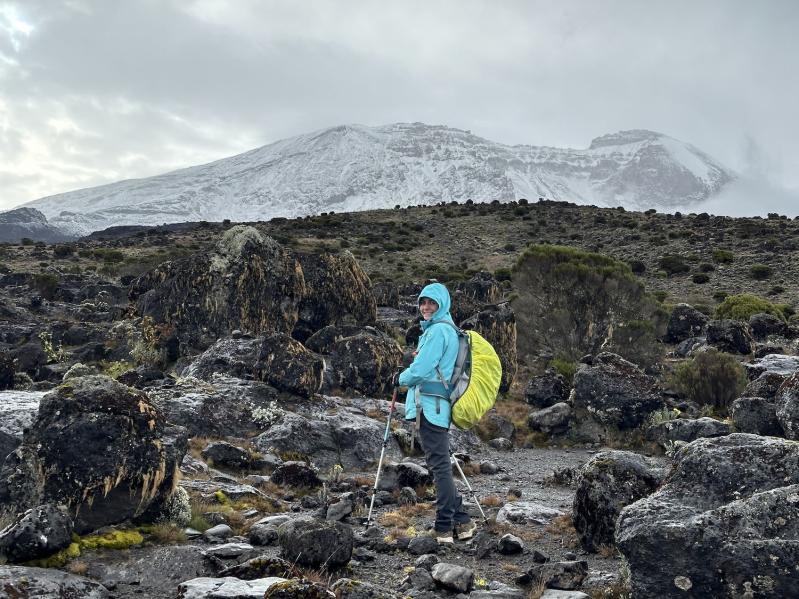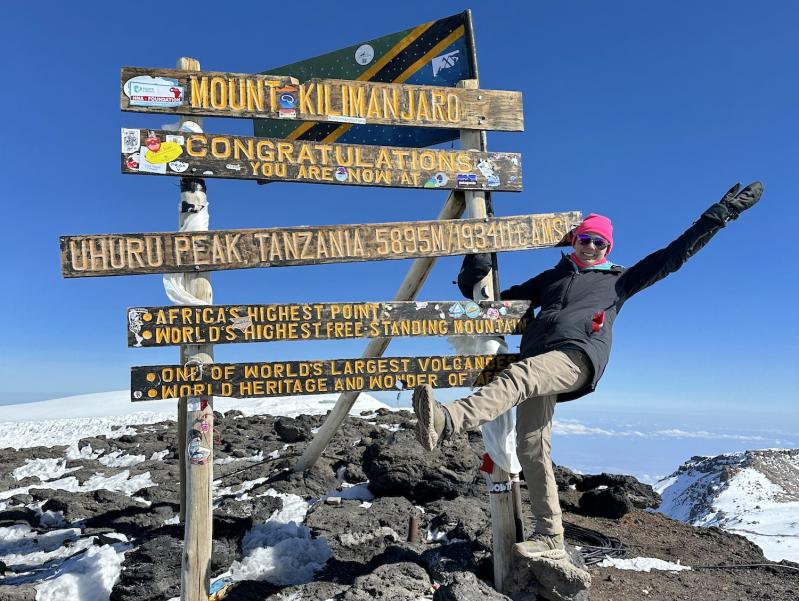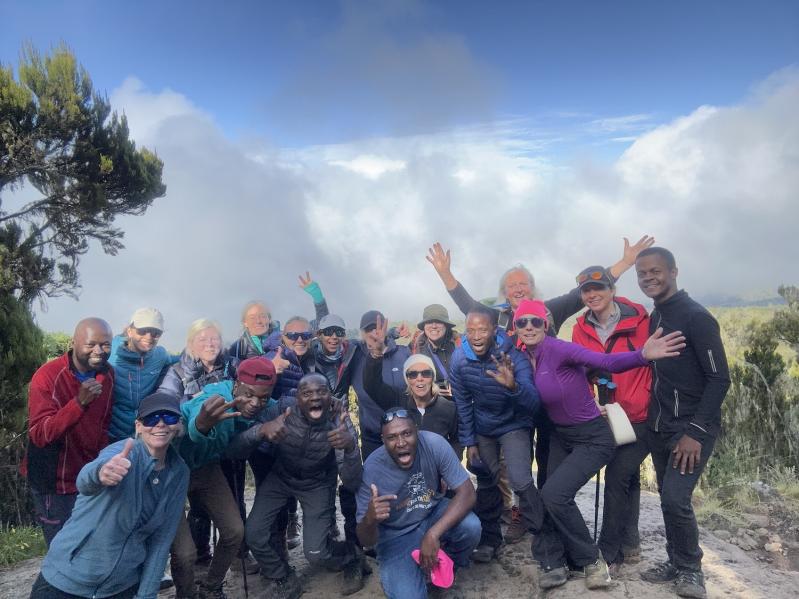At the peak of Mount Kilimanjaro on June 21, Summer Romeo of Springs told her fellow hikers that she could never do the climb again. “We were literally crying from sleep deprivation, agony, headaches, and nausea,” Ms. Romeo said late last month after returning home. “Summit night will make or break you.”
Looking out from 19,341 feet, the mountaineers then had to get back down to sea level. “Nobody tells you about that part,” Ms. Romeo said, laughing. The group trudged down steep, muddy inclines over the next day and a half to reach the base of the mountain.
The adventure had begun a little over a week earlier, in mid-June, before Ms. Romeo even arrived at the mountain, when she missed a connecting flight from Kenya to Tanzania, a flight the airline had rescheduled for after the Kilimanjaro climb.
Searching for guidance, she contacted other climbers who advised her to apply for a Kenyan visa, and Wild Hearted Adventures, the climb organizers, arranged for her to take an eight-hour car ride to a mountainside rendezvous.
 After traveling through wildlife preserves in southern Kenya, Ms. Romeo regrouped with the other dozen women from Wild Hearted Adventures and the mountaineers began their seven-day trip toward the summit.
After traveling through wildlife preserves in southern Kenya, Ms. Romeo regrouped with the other dozen women from Wild Hearted Adventures and the mountaineers began their seven-day trip toward the summit.
The journey started in a dense, swampy rain forest with 100-foot trees on Kilimanjaro’s Machame Route, which the group took to the summit. In the humid forest, the mountaineers had to shed layers to cool down.
 Once out of the rain forest, they reached a moorland, a tundra-like biome that sustains little vegetation. Unlike a tundra, however, the moorland on Kilimanjaro can reach 90 degrees.
Once out of the rain forest, they reached a moorland, a tundra-like biome that sustains little vegetation. Unlike a tundra, however, the moorland on Kilimanjaro can reach 90 degrees.
 “You’re right on the equator, so that sun is so hot,” said Ms. Romeo. On this stretch, the heat each day typically peaked around 2 p.m., as the hikers donned their sun hats. “Then, night comes and you’re in four layers.”
“You’re right on the equator, so that sun is so hot,” said Ms. Romeo. On this stretch, the heat each day typically peaked around 2 p.m., as the hikers donned their sun hats. “Then, night comes and you’re in four layers.”
Four hikers stopped because of altitude sickness, which is characterized by confusion, dizziness, and nausea. One hiker was so affected y the sickness that she forgot her children’s names. Ms. Romeo remembers thinking, “If I’m already flying there, there is no way I’m not doing this. But you leave it all up to altitude sickness.”
To prepare for the expedition, Ms. Romeo put her treadmill on its maximum setting and walked in her hiking boots. As for the outdoor part, she carried one of her young children — each of whom weighs about as much as her 30-pound backpack — around on local trails. She had also trained for and completed the New York City Half Marathon in March.
On the hike, the group had a crew of 36 support staff to assist, six of whom acted as guides. The remaining 30 carried one duffel bag each, while the hikers carried nothing but poles and a backpack with necessities such as wool socks. Each day, the support staff would pass the hikers on the trail, setting up a camp in preparation for nightfall.
 At 17,000 feet, on the last of the seven days, the hikers reached snow, which marked the final stage on the way to the summit. Near the peak, it was about 0 degrees.
At 17,000 feet, on the last of the seven days, the hikers reached snow, which marked the final stage on the way to the summit. Near the peak, it was about 0 degrees.
“You’re running on fumes on summit night,” said Ms. Romeo, noting that she began to feel some dizziness. The hikers reached the summit under the full strawberry moon on June 21.
Back at the base of the mountain, Ms. Romeo rethought her sharp declaration on the peak that she could never do it again. “Sign me up for the next trip,” she told her fellow hikers. That next trip will likely be a hike along the Inca Trail to Machu Picchu in Peru in 2025.
The climb was “a huge personal accomplishment,” Ms. Romeo said, but also a group one. “The mountain grounds you” and makes you realize “you could not have done it without the collective.


